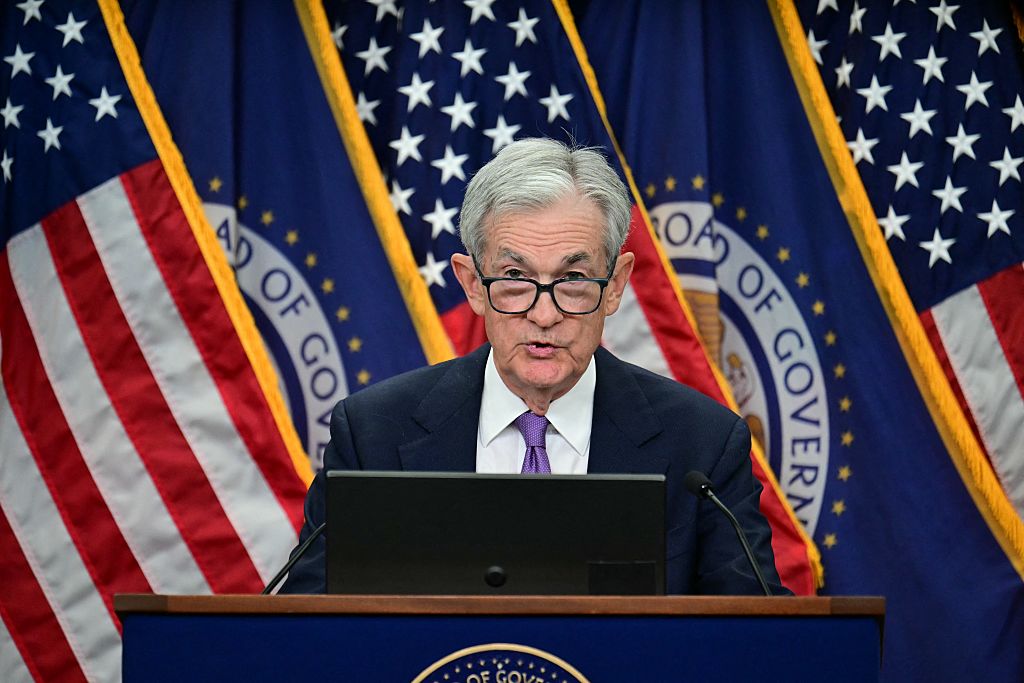Kiplinger Inflation Outlook: Stable for Now, but With Signs of Increasing Tariff Pressure
An overall good September report does show more signs of pressure on goods prices from tariffs.

Kiplinger Economic Outlooks are written by the staff of our weekly Kiplinger Letter and are unavailable elsewhere. Click here for a free issue of The Kiplinger Letter or to subscribe for the latest trends and forecasts from our highly experienced Kiplinger Letter team.
Inflation came in slightly softer than expected, ticking up to 3.0% in September, from 2.9% in August, a smaller increase than economists were looking for. A temporary sharp slowing of shelter costs helped to offset a jump in gasoline prices. Gas prices have dropped in October, however, and will subtract from October inflation, if the government shutdown ends soon enough for it to be reported. Price increases for groceries and at restaurants eased in September. Excluding food and energy, the inflation rate edged down to 3.0%, from 3.1% in August. Excluding housing, services prices continued rising at a moderate rate. Price pressures continued for child care and haircuts. Recent jumps in airfares have been tied to pickups in jet fuel costs, but this should reverse in October.
The impact of tariffs on prices is becoming more apparent, despite having so far only a modest effect on overall inflation. Three-quarters of all goods categories saw price gains in September, up from two-thirds in August. Historically, this level has been less than half, with declines in most goods prices offsetting services inflation to a degree. Now, however, goods are adding to inflation. Quality-adjusted prices for new motor vehicles are rising at their fastest rate since 2023. It seems likely that tariff costs will become more noticeable in prices as pretariff inventories of imported goods are drawn down throughout the summer.
From just $107.88 $24.99 for Kiplinger Personal Finance
Become a smarter, better informed investor. Subscribe from just $107.88 $24.99, plus get up to 4 Special Issues

Sign up for Kiplinger’s Free Newsletters
Profit and prosper with the best of expert advice on investing, taxes, retirement, personal finance and more - straight to your e-mail.
Profit and prosper with the best of expert advice - straight to your e-mail.
Expect inflation to end the year a bit higher, at 3.3%. Core inflation (excluding food and energy) should also come in at 3.3%. The government shutdown means that price data for October are not being collected, and if the shutdown continues much longer, could be skipped entirely. But the September data show that the inflation picture is changing only slowly, so the Federal Reserve and analysts will assume a continuing trend of about 3%.
Inflation is still high in the eyes of the Federal Reserve, but suspected weakness in the labor market should lead the Fed to cut interest rates at its next policy meeting on October 29, and again on December 10. The Fed will be closely following the effects of tariffs on inflation over the next several months, but it should regard this as temporary. Unless a sustained pickup in inflation momentum occurs, the Fed will continue to prioritize boosting the economy.
While the headlines focus on the Consumer Price Index, note that the Fed’s goal of 2% inflation is based on a different measure, called the personal consumption expenditures deflator, not the CPI. The PCE deflator excluding food and energy is forecast to have risen at a 2.9% rate for the 12 months ending in August, the latest data available, compared with the core CPI’s 3.1% number. That’s still well above the Fed’s target for 2% inflation over the long term.
Related content
Profit and prosper with the best of Kiplinger's advice on investing, taxes, retirement, personal finance and much more. Delivered daily. Enter your email in the box and click Sign Me Up.

David is both staff economist and reporter for The Kiplinger Letter, overseeing Kiplinger forecasts for the U.S. and world economies. Previously, he was senior principal economist in the Center for Forecasting and Modeling at IHS/GlobalInsight, and an economist in the Chief Economist's Office of the U.S. Department of Commerce. David has co-written weekly reports on economic conditions since 1992, and has forecasted GDP and its components since 1995, beating the Blue Chip Indicators forecasts two-thirds of the time. David is a Certified Business Economist as recognized by the National Association for Business Economics. He has two master's degrees and is ABD in economics from the University of North Carolina at Chapel Hill.
-
 What to expect from the global economy in 2026
What to expect from the global economy in 2026The Kiplinger Letter Economic growth across the globe will be highly uneven, with some major economies accelerating while others hit the brakes.
-
 What You Need to Do With Your 401(k) Before 2025 Is Over
What You Need to Do With Your 401(k) Before 2025 Is OverBefore 2025 ends, check your 401(k) contributions, investments, and catch-up eligibility to lock in this year’s tax savings and employer match.
-
 3 Year-End Tax Moves You Can't Afford to Miss
3 Year-End Tax Moves You Can't Afford to MissDon't miss out on this prime time to maximize contributions to your retirement accounts, do Roth conversions and capture investment gains.
-
 What to expect from the global economy in 2026
What to expect from the global economy in 2026The Kiplinger Letter Economic growth across the globe will be highly uneven, with some major economies accelerating while others hit the brakes.
-
 December Fed Meeting: Updates and Commentary
December Fed Meeting: Updates and CommentaryThe December Fed meeting is one of the last key economic events of 2025, with Wall Street closely watching what Chair Powell & Co. will do about interest rates.
-
 The AI Boom Will Lift IT Spending Next Year
The AI Boom Will Lift IT Spending Next YearThe Kiplinger Letter 2026 will be one of strongest years for the IT industry since the PC boom and early days of the Web in the mid-1990s.
-
 The Delayed September Jobs Report Is Out. Here's What It Means for the Fed
The Delayed September Jobs Report Is Out. Here's What It Means for the FedThe September jobs report came in much higher than expected, lowering expectations for a December rate cut.
-
 Shoppers Hit the Brakes on EV Purchases After Tax Credits Expire
Shoppers Hit the Brakes on EV Purchases After Tax Credits ExpireThe Letter Electric cars are here to stay, but they'll have to compete harder to get shoppers interested without the federal tax credit.
-
 Amid Mounting Uncertainty: Five Forecasts About AI
Amid Mounting Uncertainty: Five Forecasts About AIThe Kiplinger Letter With the risk of overspending on AI data centers hotly debated, here are some forecasts about AI that we can make with some confidence.
-
 Worried About an AI Bubble? Here’s What You Need to Know
Worried About an AI Bubble? Here’s What You Need to KnowThe Kiplinger Letter Though AI is a transformative technology, it’s worth paying attention to the rising economic and financial risks. Here’s some guidance to navigate AI’s future.
-
 October Fed Meeting: Updates and Commentary
October Fed Meeting: Updates and CommentaryThe October Fed meeting is a key economic event, with Wall Street turned into what Fed Chair Powell & Co. did about interest rates.